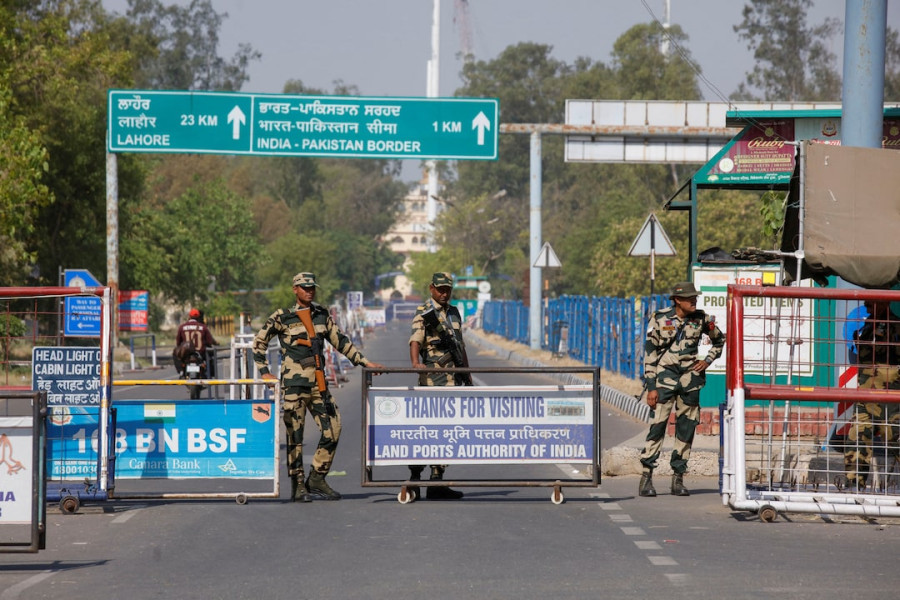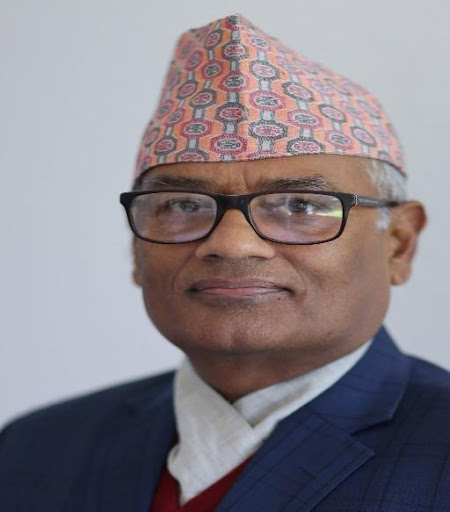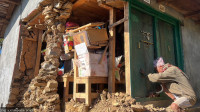Columns
Suppression of terrorism in South Asia
The growing menace of terrorism undermines peace, mutual trust and development in the region.
Purushottam Ojha
There is a common notion that terrorism in any location poses a threat to peace and freedom everywhere. The culprits of terrorist actions do not limit themselves to the territorial boundary, religion, faith or people. The objectives of terror attacks on people, property, physical and digital infrastructures may differ, but no logic or measures can justify such actions.
South Asia also faces the problem of terrorist attacks from time to time. Afghanistan has been a hotbed of terrorist activities since the formation of Mujahideen militants in the 1980s, which turned into a radical Islamist group of Taliban. It now rules the country following decades of its fight against outside and inside forces. Extreme forces undermine peace and security in the region. Violent groups such as Lashkar-e-Taiba and Tehrik-i-Taliban in Pakistan, Maoist and various insurgent groups in North-East India, Liberation Tigers of Tamil Eelam (LTTE) in Sri Lanka (decimated in 2009 by the Sri Lankan government) and Jamat-e-Mujahideen in Bangladesh, which are based on radicalism, fight either to capture or disintegrate the state or impose their religious extremism.
Nepal experienced armed conflict staged by the Maoist group from 1996 to 2006. It was brought down with the negotiation between the Government of Nepal and the Communist Party of Nepal (Maoist), aiming to turn the country into a Federal Republic from a constitutional monarchy.
India is facing a series of cross-border terrorist attacks. Be it the attack on the Indian Parliament in 2001, the Mumbai train attack in 2006, or the attack at the Taj Hotel, Mumbai, in 2008. The latest in the series is the attack on tourists in Pahalgam in Jammu and Kashmir on April 22 this year.
Nepal also endured terrorism with the hijacking of the Indian Airlines plane IC 814 by five terrorists on December 24, 1999. The plane was taken under control by the terrorists shortly after its take-off from Kathmandu airport, and was finally taken to Kandahar, Afghanistan after a short stopover in Amritsar, Lahore and Dubai. Efforts to free passengers and the aircraft from the terrorists lasted for a week. This event created misunderstandings and tension in the bilateral relations between Nepal and India. The Indian side accused Nepal of not paying attention to maintaining the minimum security standards at its international airport.
The impact of the terrorist activity was proportionately felt in the trade, transit and transport sectors. The incident happened at a time when the Nepali government was negotiating the content of a rail services agreement to bring the newly developed Birgunj dry port into operation. The Indian side shunned negotiations, stating that there would be increased risk to India’s security once the dry port became operational. It took almost three years to bring the Indian counterparts back to the table. This has caused losses to Nepal’s international trade, with stringent checks and control measures imposed on transit goods.
Another fallout is the agreed arrangement for an additional security check by Indian security staff at Kathmandu airport for all India-bound flights operated by Indian airlines. The security personnel carry out checks of accompanied baggage and frisk passengers on the stairs leading to the aircraft. On one hand, this seems absurd as it has not been practised anywhere, and on the other, it mocks the security arrangement of the Nepali government in a sensitive place like the international airport.
The porous border between Nepal and India has made the borderlands more sensitive to security threats and transboundary crimes. The inflows of informal trade continue unabated, becoming easier and more lucrative to traders than the hassles encountered in formal trade. Besides, the illegal trade of gold bullion, narcotics and fake currency is often associated with a source of financing for terrorist activities. Hence, the debate on illegal and informal trade and the threat of cross-border terrorism needs to be analysed from the perspectives of maintaining peace and security.
South Asian countries must unite in the fight against terrorism and safeguard the lives and assets of their citizens. The South Asian Association for Regional Cooperation (SAARC) took a significant step by adopting a Regional Convention on Suppression of Terrorism at its Third Summit in 1987, which was enforced in 1998. An additional protocol to suppress terrorist financing was adopted in 2004. Despite these measures, the cooperation mechanisms are ineffective and lacklustre, as evidenced by the incidents that have occurred over the last two decades.
The SAARC, as a regional organisation, has been lingering since 2014 after its 18th Summit in Kathmandu. The strategic rivalry between India and Pakistan is the main reason behind the derailment of the SAARC, as all important meetings of the regional body have either been withheld or cancelled. The takeover of Afghanistan by the radical Taliban groups in 2021 has complicated the matter for other member countries, further making the organisation dysfunctional.
Peace and stability are long-sought aspirations of South Asian countries to achieve their economic and social development goals. The growing menace of terrorism is a serious concern for the government and people as it undermines peace, mutual trust and development. In the wake of stalled regional processes, governments at the bilateral or sub-regional level must enhance collaboration, with information sharing and a robust intelligence apparatus in place to suppress terrorist activities and their financing. This will help in forging meaningful cooperation at the region and beyond.




 18.12°C Kathmandu
18.12°C Kathmandu















